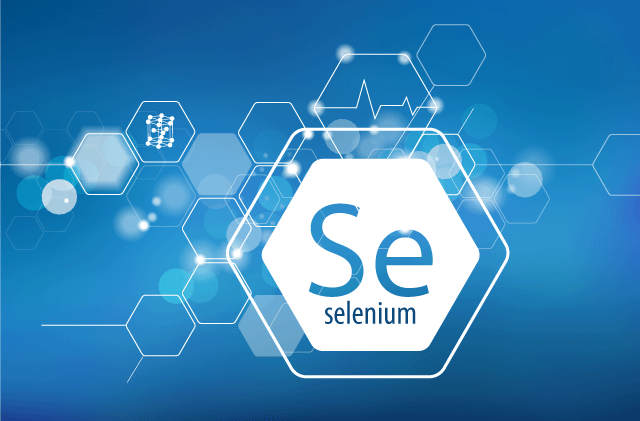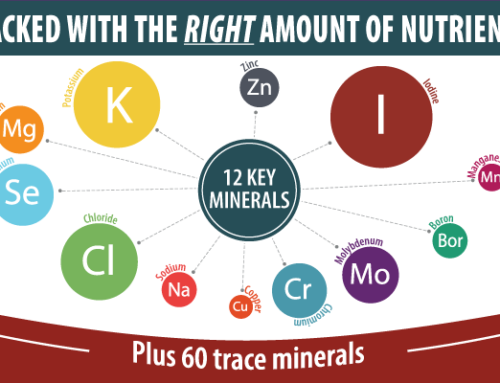a company that sells a wide variety of supplements “backed by science.” Their article on comparing different forms of selenium was written in November of 2019 and yet they cite a study from 2006-16 years ago! In this study, lambs were poisoned with massive doses of selenium far in excess of a therapeutic dose, and then euthanized and necrotized. This study was used to support the claim that organic selenium is less toxic than inorganic selenium. Yet, the reason why the inorganic selenium was more toxic when both forms were administered to the lambs is because the inorganic selenium was much better absorbed. The organic form was excreted due to its lower bioavailability. If the writers for wearefeel.com had actually read the study they cited to support their claims, they would have realized this.
The fact of the matter is that selenomethionine is cheap, easy to extract, and only a few studies have assessed the bioavailability of the different forms. Out of those studies that do compare the different forms, only the concentration of selenium in the blood is measured. However, this doesn’t tell you anything about the amount of selenium making it into the cells.
One way to study the absorption of selenium is to look at the enzyme glutathione peroxidase and its activity. This enzyme is a powerful detoxicant and is composed of selenium and amino acids. This serves as a good biomarker for selenium status in individuals. But even it has limitations as the activity of the enzyme plateaus at a certain point, and selenium is involved in much more than just this one enzyme.
Selenomethionine vs. Selenate in the body
One might be thinking that if there are few studies comparing the bioavailability of the organic and inorganic forms, how do we know that selenate is the most bioavailable? Well, the answer is somewhat complicated but I published a paper in 2020 [2] that illustrates it very well. The following figure is from that publication.

As can be seen from this figure, selenium sits in two different “pools” in the body. On the left pool (blue box) is selenomethionine, the form that is commonly misconstrued as being the most biologically available. On the right is selenate, the form of selenium that is truly the most bioavailable. On the far right we have the selenoproteins, which are benefited the most by selenium supplementation. These selenium proteins are built from amino acids. An analogy that I like to use is that minerals like selenium are woven onto amino acids like beads on a string. Our goal is to get the selenium beads onto the string of amino acids so that we have functional proteins such as glutathione peroxidase, the biomarker for selenium status that was mentioned earlier.
Now if we start out with selenomethionine, how are we going to synthesize these proteins in our bodies? Can our cells take the preformed amino acid selenomethionine and construct proteins with it directly? No, it cannot. These amino acids must first be broken down (digested) into their constituent parts to release the selenium atoms from the amino acid molecules. Once those amino acids are digested, the hydrogen selenide or methyl selenide (seen in the above figure between the two selenium pools as HSe and CH3SeH) are free to be used in the building of selenium proteins and functions in the body.
Selenate is the Most Bioavailable form of Selenium
As one could imagine, this process of digesting selenomethionine or selenocysteine takes time. Such is not the case with the inorganic form of selenium, sodium selenate, found in the Ionic Selenium supplement from Anderson Health Solutions. In this form, selenate (SeO42-) can go directly to the site of protein synthesis for inclusion in the newly assembled protein. All of these selenium proteins have yet to be identified, but one selenium protein called Selenoprotein P (Sepp1) is produced in the brain after exercise. A mouse model showed Sepp1 helping restore memory loss associated with hippocampal injury and aging. Also, it’s associated with the birth of brain cells in adults. [3].
The most bioavailable form of selenium is inorganic selenate, which is found as sodium selenate in Anderson Health Solutions Ionic Selenium. The misconception surrounding the bioavailability of selenomethionine vs. selenate is so prolific because it was not until 1979 that selenium was deemed essential when Chinese scientists learned that selenium supplementation prevented Keshan’s disease (a cardiomyopathy) in a study of several thousand Chinese children [4]. Cardiomyopathy and other forms of heart disease are, in part, caused by oxidative stress which selenium has shown to help prevent.
RDA of Selenium
The initial method for measuring selenium concentrations. The purpose of determining what the RDA should, be was based on the activity of the selenium-containing enzyme glutathione peroxidase. This extremely potent enzyme clears out hydrogen peroxide from the thyroid gland, which is one of the two organs containing the bulk of selenium in the body (the other being the kidneys). The RDA for selenium has been set at 55 micrograms per day by the USDA. In Europe, the recommendation is both more specific and higher, with the European Food Safety Authority having set the requirement at 70 micrograms per day for men, and 75 micrograms per day for lactating women [5]. Europe and North America have different regulations in place due to the more sophisticated mathematical models that are used in North America. So, the recommendations and regulations in Europe are often stricter because they utilize models that aren’t as statistically powerful as those used in North America.
Advancements in Selenium Research
Every decade the research surrounding selenium becomes more advanced. Sources that cite outdated studies are missing pieces of the puzzle, leading them to believe that selenomethionine is the most bioavailable form. Even the National Institute of Health’s “Selenium Fact Sheet for Health Professionals” displays outdated information from literature that is over twenty years old, asserting selenomethionine to be the most well-absorbed form [6].
A paradigm shift is underway with regard to the most bioavailable form of selenium.
However, it appears that this shift is far from completion based on the high volume of articles suggesting selenomethionine to be the best form when it is clearly not. Accurate information could prove very valuable to populations of individuals with illnesses that stem from poor absorption and lead to malnutrition, such as inflammatory bowel disease and chronic kidney disease. Soon nano selenium particles could be used to deliver the most accurate doses of selenium possible.
This entire area of research shows how important the dosing of selenium is. Yet, it will take time for clinical trials to catch up and substantiate these claims. At least one study has made it clear that there are other solutions, to selenium dosing including the Ionic Selenium supplement from Anderson Health Solutions.
Read article: The Many Health Benefits of Selenium
References:
- WeAreFeel Nutrition Team. (2019, November 14). Using the best form of selenium: sodium selenite vs selenomethionine. Feel. Retrieved October 25, 2022, from https://wearefeel.com/blogs/learn/best-form-of-selenium-selenite-vs-selenomethionine
- Timmerman, R., & Omaye, S. T. (2021). Selenium’s Utility in Mercury Toxicity: A Mini-Review. Food and Nutrition Sciences, 12 (02), 124-137.
- Leiter, O., Zhuo, Z., Rust, R., Wasielewska, J. M., Grönnert, L., Kowal, S., … & Walker, T. L. (2022). Selenium mediates exercise-induced adult neurogenesis and reverses learning deficits induced by hippocampal injury and aging. Cell Metabolism, 34 (3), 408-423.
- Levander, O. A., & Beck, M. A. (1997). Interacting nutritional and infectious etiologies of Keshan disease. Biological trace element research, 56 (1), 5-21.
- Constantinescu-Aruxandei, D., Frîncu, R. M., Capră, L., & Oancea, F. (2018). Selenium analysis and speciation in dietary supplements based on next-generation selenium ingredients. Nutrients, 10 (10), 1466.
- U.S. Department of Health and Human Services. (2021, March 26). Selenium Fact Sheet for Health Professionals. NIH Office of Dietary Supplements. Retrieved October 25, 2022, from https://ods.od.nih.gov/factsheets/Selenium-HealthProfessional/






